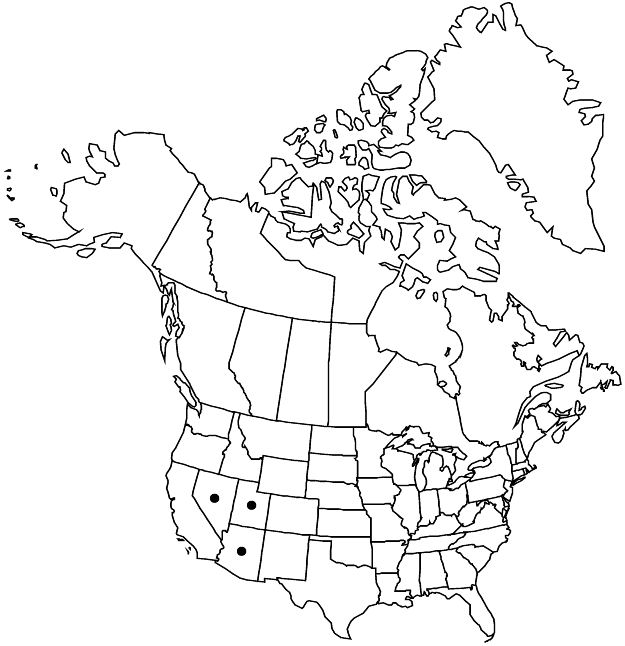Difference between revisions of "Petalonyx parryi"
Proc. Amer. Acad. Arts 10: 72. 1874.
Common names: Parry’s sandpaper plant
EndemicConservation concern
Treatment appears in FNA Volume 12. Treatment on page 544.
FNA>Volume Importer |
imported>Volume Importer |
||
| Line 53: | Line 53: | ||
|publication year=1874 | |publication year=1874 | ||
|special status=Endemic;Conservation concern | |special status=Endemic;Conservation concern | ||
| − | |source xml=https:// | + | |source xml=https://bibilujan@bitbucket.org/aafc-mbb/fna-data-curation.git/src/bb6b7e3a7de7d3b7888a1ad48c7fd8f5c722d8d6/coarse_grained_fna_xml/V12/V12_233.xml |
|genus=Petalonyx | |genus=Petalonyx | ||
|species=Petalonyx parryi | |species=Petalonyx parryi | ||
Revision as of 20:08, 27 May 2020
Shrubs, bushy to moundlike, to 15 dm; branches of current season to 13 cm. Leaves: petiole 0.5–3.5 mm; blade ovate to elliptic, without marked size dimorphism, to 40 × 30 mm, base acute to rounded, margins usually crenate to serrate, sometimes small leaves entire, apex acute. Inflorescences 35–65-flowered. Flowers strongly bilaterally symmetric; petals spatulate, 10–15 mm, claws postgenitally distally coherent, forming slitted corolla tube; stamens exserted laterally through slits between petal claws. 2n = 46.
Phenology: Flowering Apr–Jul.
Habitat: Wash bottoms, desert plains, usually white to gray, clayey soils.
Elevation: 400–1300 m.
Distribution

Ariz., Nev., Utah.
Discussion
Selected References
None.
Lower Taxa
None.